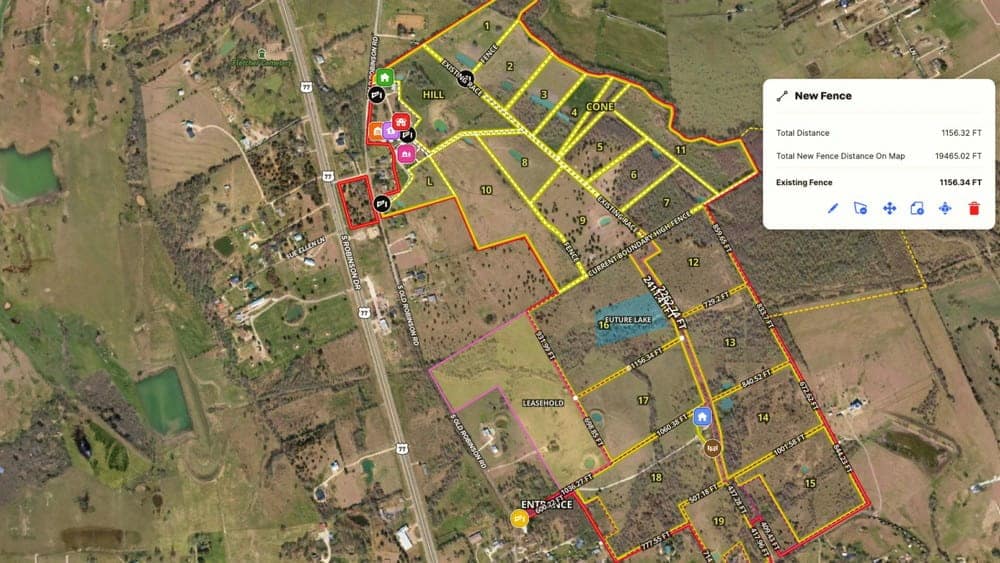
Modern land management relies heavily on land parcel mapping tools, which play a role in ensuring the accurate mapping of land parcels with great detail and precision. In today’s evolving landscape, these tools have evolved to offer a wide range of features that enhance their usability and effectiveness. This article explores the characteristics that distinguish land parcel mapping tools in order to assist users in making well-informed decisions when choosing the most suitable option.
User-Friendly Interface
Using the software may feel overwhelming to some individuals. Henceforth, a user-friendly layout is an element of any efficient land parcel map app. Simplified designs facilitate the process and lessen the learning curve for beginners. Characteristics like drag-and-drop options and customizable dashboards improve the accessibility and functionality of the tool. When users find it effortless to retrieve and modify data through menus and features provided by the tool, their productivity sees a boost.
High-Resolution Imagery
Accuracy plays a role in cartography on land surfaces, as every aspect of a plot is accurately depicted through high-quality images. Effective mapping tools integrate satellite and aerial images to give users a perspective. This clear depiction is essential for evaluations and strategic decision-making. Examining visuals at the initial stages helps detect possible challenges ahead of time and thus effectively optimizes both time and assets.
Integration Capabilities
Integrating mapping tools with software systems enhances their flexibility and usefulness significantly. When these tools seamlessly connect with Geographic Information Systems (GIS), Computer Aided Design (CAD), and other applications, it enables the sharing and analysis of information. This interoperability is crucial as it empowers users to make use of existing datasets, improving the mapping experience. By enabling integration between systems, redundancies are minimized, resulting in a better workflow for users.
Real-Time Data Updates
In the realm of land management and administration, speed is crucial to access; instant, up-to-date information is fundamental. Live data tools enable decisions. Real-time monitoring of alterations in land boundaries, ownership details, and usage trends guarantees map accuracy. Regular updates deter inconsistencies, nurturing confidence in the information supplied.
Advanced Analytical Tools
Effective land management relies heavily on data analysis. Tapping into tools enables users to derive valuable insights from their data. Utilizing functions like trend analysis, predictive modeling, and statistical reports greatly assists in making decisions. These analytical capabilities play a role in converting data into actionable information to improve strategic planning.
Customization Options
Each piece of land has characteristics that should be accurately represented in mapping tools to effectively meet individual needs. Customizable features empower users to personalize the software according to their requirements. Adjustable map layers, personalized data fields, and tailored reports contribute to the tool’s versatility and adaptability across purposes. This level of flexibility improves user experience by catering to application scenarios.
Secure Data Management
Ensuring security is crucial when managing land information. Dependable mapping software includes data management capabilities to safeguard user data. Encryption methods and secure access protocols are utilized alongside data backups to maintain data integrity. Having tools in place gives users peace of mind, allowing them to concentrate on their tasks without concerns about potential data breaches.
Cost-Effectiveness
While advanced features are crucial, affordability cannot be overlooked. Cost-effective solutions strike a balance between functionality and budget constraints. Subscription models, scalable pricing, and comprehensive support services contribute to overall value. Investing in a reliable yet affordable tool ensures that users receive maximum benefits without straining resources.
Mobile Accessibility
In today’s society, focusing on devices and convenience is crucial. Mobile-friendly map applications let users access information while they are out and about. By using apps and websites that adjust to screens seamlessly, people can easily reach important details from anywhere they happen to be, which promotes adaptability and efficiency in their work.
Conclusion
Choosing the right land parcel mapping tool involves careful consideration of several features. The beginning is a user-friendly interface, high-resolution imagery, and integration capabilities. Real-time data updates, advanced analytical tools, and customization options further enhance usability. Secure data management and cost-effectiveness ensure long-term sustainability. Lastly, mobile accessibility provides the flexibility needed in a dynamic environment. By prioritizing these features, users can select a tool that meets their needs, optimizing their land management efforts.








